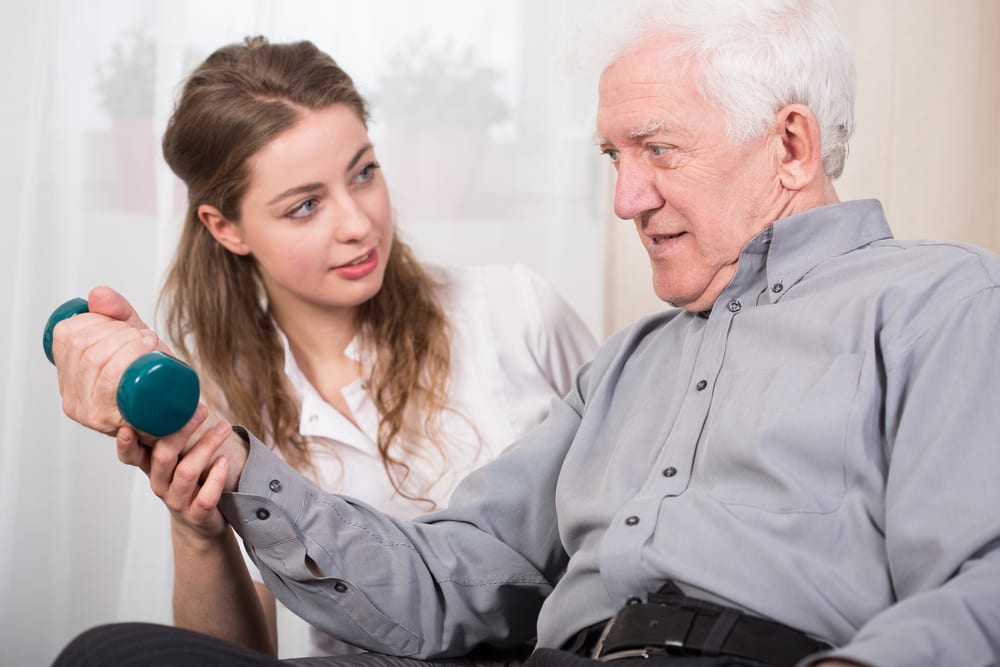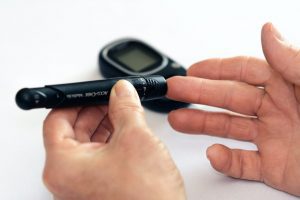What Are The Symptoms Of A Stroke? Understanding Stroke Symptoms & Care

As our parents, grandparents or other elderly loved ones grow older, they become more vulnerable to illness. From the common cold and flu, through to more serious ailments such as a heart attack or stroke, it is important to be vigilant at all times.
If someone you love has historically suffered a stroke and you are worried they may have another one, or they have been diagnosed with a condition that is known to increase the risk of stroke, the fear of a sudden onset can be upsetting and concerning for everyone.
In this post, we have outlined the symptoms of a stroke, as well as how to look after your loved one once they have had a stroke so that you can confidently care for your family.
What are The Symptoms of a Stroke?
From the main causes of a stroke to what symptoms you should be looking out for, we have answered some common questions below to help ease your mind. If you are particularly worried, why not consider investing in live-in care? That way you will have peace of mind that there is a trained professional with your loved one at all times who will be able to spot potential symptoms and act on them quickly.
What are the Main Causes of a Stroke?
Strokes are more common among older people because our arteries become harder, more narrow and are more likely to become blocked as we age.
There are medical conditions that can increase the risk of a stroke. These include hypertension, atrial fibrillation (also known as irregular heartbeats), diabetes and high cholesterol. If your loved one is aged over 65 and has been diagnosed with any of those conditions, it may be worth discussing the chances of stroke with a doctor to get some tailored and professional medical advice. It is also worth bearing in mind that colder weather can also increase the chances of a stroke, especially as we enter winter.
What are the Types of Stroke and Symptoms
Essentially, a stroke is when blood supply to the brain is either restricted or stopped completely. There are two main types of stroke that you should be aware of:
- Ischaemic stroke: is when a blood clot stops the supply of blood to the brain.
- Haemorrhagic stroke: occurs when a weakened blood vessel that supplies blood to the brain bursts.
The most common cause is Ischaemic, which accounts for 85% of cases.
Mini Stroke Symptoms
A mini-stroke, or a Transient Ischaemic Attack, is a related condition where the blood supply to the brain is temporarily restricted. A TIA is often a warning sign preceding a stroke and can last from anything between a few minutes to a full twenty-four hours.
What are the Signs and Symptoms of Stroke?
Some of the signs and symptoms of a stroke are easy to identify, while there are others that make diagnosis more tricky. You may remember a TV advert in 2015 that outlined the four main signs to watch out for. These symptoms were summarised using the acronym F.A.S.T<
https://www.youtube.com/watch?v=O3F-r0D648o
F – Face: If one side of someone’s face has fallen or is drooping and their ability to smile is impaired, call an ambulance straight away.
A – Arms: Ask them to raise their arm and keep them in that raised position. If they are unable to keep their arms suspended in the air, they may be experiencing a stroke and you should contact emergency services quickly.
S – Speech: Difficulty or inability to speak is also an easy-to-identify symptom. Their speech may be slurred and they may be unable to understand verbal forms of communication. If this occurs, phone 999 immediately.
T – Time: If you believe that someone is experiencing a stroke, time is of the essence. The faster someone is able to seek medical attention, the more chance there is of stroke recovery.
Stroke Symptoms in Women
Whilst both men and women are at risk of a stroke, there is a higher risk for women. One in five women will suffer a stroke and there are unique symptoms in addition to the ones discussed above.
The nature of these symptoms are more difficult to diagnose and they include:
- Fainting or loss of consciousness
- Shortness of breath
- A sudden change in behaviour
- Being sick of feeling nauseous
- Disorientation, confusion or being unresponsive
- Seizures
- Hallucination
- Hiccups
- Pain
- Weakness
- Agitation
A stroke can be an overwhelming experience for both the individual and their family. The effects can be unsettling, as well as your new responsibilities, but having the correct information will aid in caring for a stroke patient at home.
Caring for a Stroke Patient
Often it’s hard for us to understand the needs of an individual who has suffered from a stroke. However, the most important thing we can do for them is to put ourselves in their shoes in order to understand how best to help them.
If you suddenly find yourself in a situation in which you need to be caring for a loved one who has suffered a stroke, know that you are not alone. These are six steps you can take in order to care for them, how best to understand the effects strokes have, and acknowledge the setbacks that come with enduring a stroke.
1. Educate Yourself and Speak to a Professional
For the everyday person, there is a lot to learn about the condition and how one can be affected by it, as it can affect each person differently. Take every opportunity to learn, as it’ll equip you with the skills needed to be able to better care for your loved one.
Talk with healthcare professionals about stroke recovery, join support groups offered by hospitals or visit healthcare agencies to understand the necessary steps going forward.
2. Encourage Daily Rehabilitation Exercise
It’s important to attend the first few physical therapy sessions with a loved one. Not only is it an encouraging act that will help them feel less alone, but it’ll equip you with an understanding of what physical exercises need to be performed daily.
Once your loved one leaves a rehabilitation home or the hospital, you must encourage them to perform exercises daily as it’s the best remedy for a stroke. A daily exercise routine is part of the process of recovering from a stroke and will help them rewire their brain and regain control of their body.
If you are someone who can’t take much time off of work, a live-in caregiver can provide full-time care and assist with physical activities.
3. Take Note of the Side Effects of Medications
It’s not uncommon that side effects of medications prescribed for strokes can lead to drowsiness, impaired vision and nausea. These side effects can put your loved one at risk of falling and suffering from further injury.
Keep a record of any noticeable changes in behaviour, mood or development of unusual symptoms that the stroke survivor experiences. Records will also help future discussions with doctors and nurses to assess the individual’s well-being.
4. Assess Your Finances
Stroke treatment can be a financial burden, so it is essential to contact your insurance company to determine what treatments are covered. Generally, hospitalisation is covered, but long-term care and rehabilitation often have to come out of the pocket.
Assess your financial situation once you have spoken with your insurance company, and from there, you can set aside a budget for the expenses of caregiving.
5. Assess How Capable They Are of Performing Everyday Tasks
Depending on the severity of the stroke, your loved one may need assistance in performing everyday tasks, such as bathing, getting dressed, making tea or attending rehabilitation sessions. It’s important to assist where fit and keep a delicate balance between allowing them to accomplish tasks by themselves to gain independence and control over their lives.
As someone who is caring for another person, remember that you can’t do it all. It’s essential to look after yourself, too, so that you can show up as the best version of yourself for your loved one. If you feel as though there is too much on your plate, a live-in carer can provide that extra bit of support.
6. Be Mindful of Your Loved One’s Moods and Behaviours
A stroke is a traumatic experience for a person, so it’s only natural that a stroke victim may display behaviours and moods that you are not used to. Part of being a caregiver for a family member is being sympathetic to the moods and emotions that someone is showing and offering an ear to listen.
Depression is a common stroke symptom, so you must note any depressive behaviours to a professional to best address the situation.
Conclusion on Stroke Symptoms and Care
If you are concerned about your loved one but don’t yet feel that 24 hour live-in care is necessary, why not consider elderly care? A care professional will visit your loved one on a regular basis at a specific time to check that everything is OK. Not only will they be able to monitor and keep an eye out for signs of a stroke, but they will also spend time getting to know and building a friendship with your loved one.
If you are worried about someone you love and want to discuss what options are available, our fully trained and experienced care staff are on hand to speak with you.




